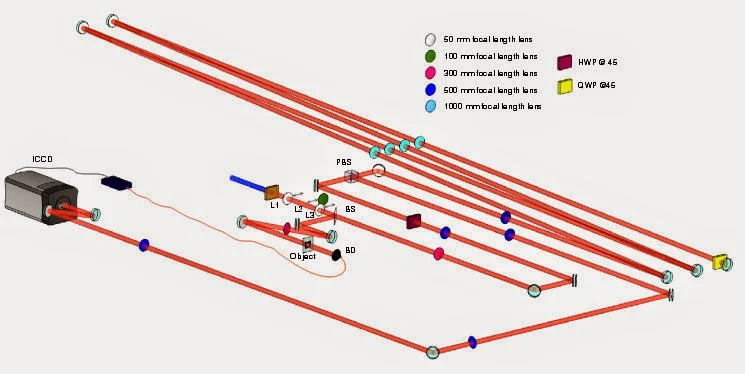Now low light is no disadvantage for Cameras as they are getting innovated to take better images even in low light. With this theory Researchers of University of Glasgow have got the inspiration and they are working towards creating an image that will be capable of working even with less than 1 photon per pixel. This team has been able to achieve this milestone which was seemingly impossible through combination of two esoteric technologies namely compressive imaging and photon heralding. The process involves seems to be very clear and simple leaving aside the amount physics and math that went under it.
The first part of this peculiar science is heralded imaging. Also known as “ghost imaging”, this is based on heralded photons. Spontaneous parametric down-conversion (SPDC) process can be used to produce pairs of quantum-entangled photons under certain situations and then they can be split apart. At most of the time, if one of the photon is detected even the other one gets detected.
How the imager works?
The imagers utilizes a beam splitter which send one out of each pair of photons it has created through the object that needs to be imaged and through a highly sensitive single-pixel detector. The other pair goes through high-speed camera. When a photon is sensed through a target object it leads to the activation of the detector. After this the detector send signal for shutter to open up for about 15 nanoseconds. This amount of time eliminate all the background noise and record the position of the second heralded. This allows it to take the picture of the photons quickly. A delay of 70 nanoseconds has been added to the path of the camera which allows enough time for the shutter to release signal to camera from detector.
Although one can’t avoid the shot noise which comes from the Poisson distribution of photons, this kind of heralded photons enables the imager’s light requirement get as low as one photon per pixel. Compression imaging is used to deal with this noise and go further which is less than one photon per pixel. Compressive imaging utilizes frequency domain information by relying on inherent redundancy of information in natural subject.
Advantages:
So Quantum camera can take photos in complete darkness and it will need only one photon per pixel. This amazing camera is not meant only for show purposes. The research team hopes it will drive the growth of cameras for scholarship researches, wherein they are required for investigating and analyzing subjects which are extremely light sensitive, for example certain kind of biological specimens. So when it comes to complete darkness, it’s time to ditch all the high end cameras with limited functioning in darkness and move ahead to the next generation of Camera- Quantum Camera.





No comments:
Post a Comment